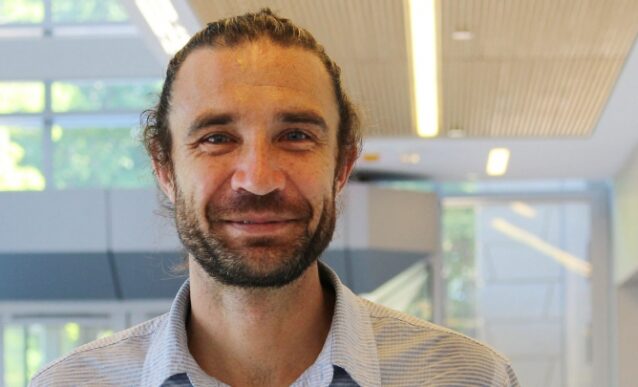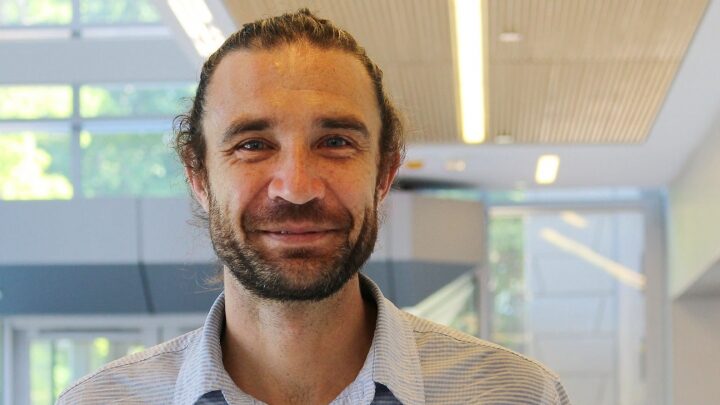Investigator Spotlight: Alex Shorter

“Understanding Cardiac Health through Innovative Wearable Sensing”
Precision Health Investigator Award recipient Kenneth Alex Shorter, PhD, researches how mechanics can monitor and improve the health and mobility of patients. An assistant professor of Mechanical Engineering at U-M, Shorter conducts research in human movement biomechanics, assistive device design, bio-logging/comparative biomechanics, and soft tissue mechanics. His Precision Health grant will fund research in developing a novel wearable sensor system to quantify the physical condition of a cardiac patient pre-surgery to help determine whether that individual is likely to be at risk for complications during and after surgery.
“Currently, an estimated four out of every 10 cardiac patients experience a major complication after surgery, including morbidity (e.g., stroke, infection) or mortality,” says Shorter. “Patients with poor physical fitness (e.g., frailty) are particularly vulnerable to major complications. How to identify high-risk patients and optimize such individuals prior to cardiac surgery remains a significant gap in the current paradigm.
“The medical community lacks a structured approach for assessing frailty, prescribing an intervention plan, and monitoring a patient’s physical activity to assess improvement. Key to addressing this is an integrated approach that uses wearable sensing technology and analysis algorithms to complement a clinical assessment of frailty,” he says, adding, “An enabler in achieving this objective lies in the development of an intelligent wearable sensor system that will provide biomechanical and physiological measurements from patients outside of the clinic.”
According to data from the Agency for Healthcare Research and Quality (AHRQ), cardiovascular surgical procedures are one of the most common type of surgeries in the United States, Shorter says. “From 2000 to 2010, the number of cardiovascular surgeries has increased 28%, to over 750,000 procedures per year.”
“How to identify high-risk patients and optimize such individuals prior to cardiac surgery remains a significant gap in the current paradigm.”
A system of wearable sensors that generates a number of metrics over regular intervals could help identify which cardiovascular surgical patients are at increased risk for a major complication or mortality. Identifying these individuals can result in “an improved understanding of surgical risk and a more informed decision-making process by patients and their families,” says Shorter. In addition, healthcare providers can put interventions in place to improve a patient’s fitness prior to surgery—what Shorter calls “prehabilitation.”
“Currently, limited data exists to support prehabilitation prior to surgery; however, a ‘one size fits all’ program is not optimal, as some patients do not need prehabilitation, while others may gain significant benefit,” Shorter says. “An intelligent wearable sensor system will allow for the identification of patients most in need of prehabilitation, and for the continued monitoring of such patients, as physical conditioning is optimized.”
Shorter values the resources and mindset of collaboration at U-M to support this precision-health approach. “The team that we have at U-M is key to enabling the research in this project,” he says. “Success for this project requires collaboration from researchers in mechanical engineering and the school of information, as well as collaboration with a healthcare environment and human subjects at both a detailed research level and a higher research direction level. All of which is made possible by the collaborative research environment at the University of Michigan.”
Shorter earned his PhD in mechanical engineering from the University of Illinois at Urbana-Champaign. He has worked as a research engineer and postdoctoral investigator for the Woods Hole Oceanographic Institution, and was an assistant research scientist and research investigator for the University of Michigan’s Mechanical Engineering department. He has coauthored a strong record of peer-reviewed articles that have appeared in a wide range of publications.


